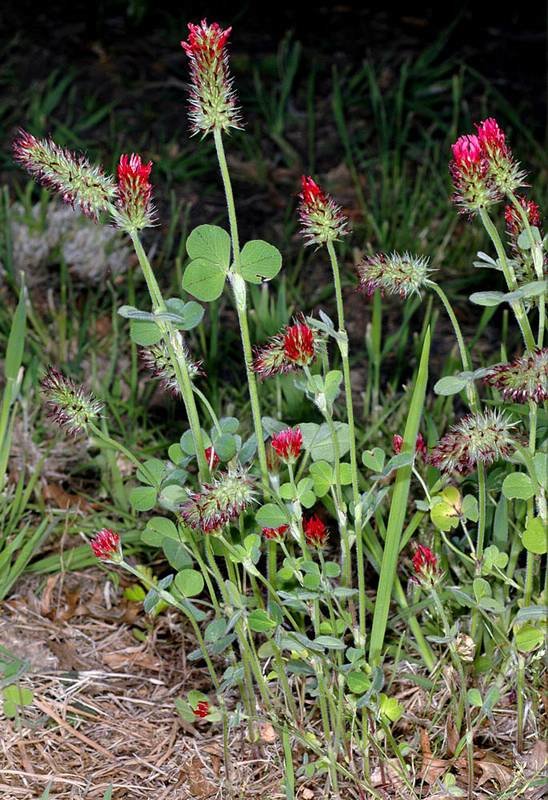Whether you’re growing vegetables, fruits, herbs, or ornamental plants, everything we grow depends on the soil! A simple and sustainable way to protect and improve soil in any size garden is …
This item is available in full to subscribers.
We have recently launched a new and improved website. To continue reading, you will need to either log into your subscriber account, or purchase a new subscription.
If you had an active account on our previous website, then you have an account here. Simply reset your password to regain access to your account.
If you did not have an account on our previous website, but are a current print subscriber, click here to set up your website account.
Otherwise, click here to view your options for subscribing.
* Having trouble? Call our circulation department at 360-385-2900, or email our support.
Please log in to continue |
|

Whether you’re growing vegetables, fruits, herbs, or ornamental plants, everything we grow depends on the soil! A simple and sustainable way to protect and improve soil in any size garden is the use of cover crops.
Cover crops are a form of “living mulch.” They add organic matter and nutrients, improve soil structure, suppress weeds, support pollinators, and attract beneficial insects. Including cover crops in your garden plan also helps protect water quality by reducing nutrient leaching, erosion, and water runoff.
Rather than being harvested for food, cover crops are returned to your garden soil just before they go to seed. Nutrients are released as the plants decompose.
Cover crops have a long history, with evidence of their use in ancient India and China. During the Roman Empire, Greek and Roman farmers planted bell beans to improve soil quality in their vineyards. In Europe, lupines were grown in the 1700s to improve sandy soil. In the American South, soil depletion from tobacco monocultures led to widespread use of cover crops by the late 1700s.
For generations, Native American communities planted legumes, a nitrogen-fixing crop, to improve soil health. The indigenous practice of growing the “Three Sisters” — corn, beans, and squash — illustrates the wisdom of interplanting using cover crops. Corn provides stalks for beans to climb, while the beans add nitrogen to the soil. Squash plants provide shade and a living mulch to help retain soil moisture and suppress weeds.
Cover crop use declined with the advent of synthetic fertilizers and herbicides around the 1950s. Recently, though, there has been a resurgence in the practice as an effective and sustainable alternative for home gardens, farms, and vineyards.
Early fall is a great time to plant cold-hardy cover crop seed in existing garden beds, new planting spaces, or restoration areas. Anticipated fall rains and moderate temperatures will help new plantings get established before the first frost to provide winter cover.
Many seed companies and local garden centers offer cover crop seeds and mixtures of legumes and cereal grasses in packages sized for all situations, from garden plots to larger acreage.
Plant legumes if you want to add nitrogen to your soil. Grasses will compete with weeds, reduce erosion, or capture available nitrogen left at the end of the growing season. A combination of legumes and grasses will reap both types of benefits.
Good choices for cold-hardy cover crops in our growing area include:
Grasses: winter wheat, oats, barley, and annual ryegrass. Grasses produce large quantities of organic matter and their roots break up compacted soil.
Legumes: clovers (such as crimson or red), hairy or common vetch, fava beans, bell beans, and Austrian winter pea. Legumes fix nitrogen from the atmosphere. When the plants decompose, some of the fixed nitrogen is released for use by future plants.
Pollinator plants: lacy phacelia and calendula. These broadleaf annuals produce beautiful flowers that offer pollen and nectar for honeybees, native pollinators, predators, and other beneficial insects. They grow well with other cover crops and are often planted with legumes.
Cover crop mixtures: legumes and grasses (winter mix). Many mixes combine the benefits of individual seeds and increase the odds that you’ve planted something suited to your garden’s soil and climate.
Terminating the cover crop is as important as planting the crop in the first place. When the plants are just about to produce seed or the top growth is getting out of control, cut off the crop at the base of the plant, or mow the area. (If you want to terminate grasses, cut them below the crown of the plant.) Add the tops to your compost bin, or leave them on the soil surface for several days. You can then turn them under with a shovel or tiller, or leave the surface residue for mulch.
After terminating the cover crop, it’s best to wait two or three weeks before planting vegetables or flowers; the decomposition of green material can tie up soil nitrogen, and some cover crops such as rye can inhibit initial seed germination.
If you’re just beginning to experiment, start with a crop that is easy to grow and manage, like crimson clover or fava beans. Plant in a small area of your garden and compare the results to the rest of your garden. As you gain experience, experiment with other cover crops and include them in your overall garden plan.
Cover crops are “plants that give back.” You can improve your soil—with the added benefits of creating winter interest and wildlife habitat in your garden.
For more information, including recommended planting dates for home gardens west of the Cascades, WSU offers a free Fact Sheet (Publication FS111e):
https://pubs.extension.wsu.edu/cover-crops-for-home-gardens-west-of-the-cascades-home-garden-series
Master Gardeners at the online Plant Clinic host weekly live Zoom sessions from 12:30 to 2:30 p.m. Mondays. To make an online appointment or submit a written question, visit http://jefferson.wsu.edu/plant-clinic.
(Barbara Faurot is a Jefferson County Master Gardener and Master Pruner, working with other volunteers who serve as community educators in gardening and environmental stewardship.)